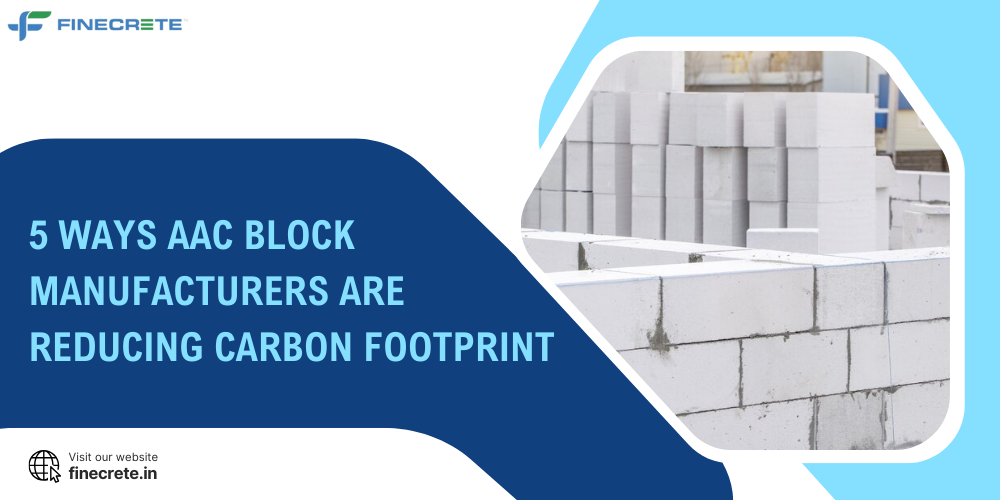In the new millennium, sustainability is a big priority for the world at large and the construction industry is also bracing up to go green. Naturally, construction material manufacturers are bracing up and putting in new efforts to reduce their carbon footprint. Lightweight and energy-efficient, AAC (Autoclaved Aerated Concrete) blocks are already known to be eco-friendly. However, manufacturers are implementing strategies to minimize the impact of large-scale production in the operating domain. Here are five ways AAC block manufacturers are working to reduce their carbon footprint.
- Installing solar rooftop facilities for renewable energy
Manufacturers are trying to harness solar energy to power their production processes with renewable energy, significantly decreasing reliance on fossil fuels. This shift helps to lower greenhouse gas emissions as well as reduce energy expenses in the long run.
Many manufacturers are investing in solar technology to ensure their operations are more sustainable. Installing solar rooftop facilities helps contribute to a cleaner environment while maintaining efficient production levels.
- Recycling water in the manufacturing process
Water is a crucial resource in the manufacturing of AAC blocks. Efficient use of this resource is essential for sustainability. Many manufacturers are adopting water recycling systems to reuse water in their production processes. With water treatment and recycling, they are minimizing waste and reducing the demand for fresh water.
This practice helps to conserve water and lowers the energy required for water treatment and transportation. Thus, manufacturers can significantly reduce their environmental impact while maintaining high production standards.
- Minimizing waste through optimized production techniques
With advanced manufacturing technologies and processes, manufacturers can improve efficiency and minimize material waste. Techniques such as precise cutting and automated production lines ensure an effective use of raw materials, reducing excess and scrap.
Further, many manufacturers are using recycled materials in their Autoclaved Aerated Concrete block production. This helps to divert waste from landfills and lowers the carbon emissions associated with sourcing new materials.
- Reducing transportation emissions with local sourcing
Transportation emissions are a significant contributor to the carbon footprint of construction materials. To combat this, many AAC block manufacturers are prioritizing local sourcing of raw materials and establishing production facilities closer to construction sites.
Manufacturers can lower transportation-related emissions significantly, by reducing the distance materials need to be transported. This approach is benefiting the environment and supporting local economies by creating jobs and fostering community development. Local sourcing can also lead to faster delivery times, improving overall project efficiency.
- Adopting eco-friendly packaging solutions
Traditional packaging materials can contribute to environmental degradation. Consequently, many manufacturers are exploring biodegradable wraps or recyclable options. They are using sustainable packaging to minimize waste and promote a circular economy. With this, their commitment to eco-friendly practices extends beyond the production process. It encourages both customers and suppliers to participate in sustainable initiatives.
The best among AAC block manufacturers like Finecrete is increasingly adopting eco-friendly practices and trying various innovative strategies to reduce their carbon footprint. Committed to sustainability, it is making significant strides in improving its operations and ensuring the safekeeping of the environment, despite constant production activities.






